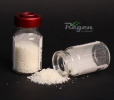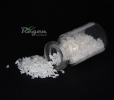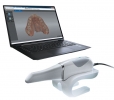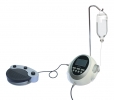A periodontist is a specialist that many patients know very little about — until the day they are referred to one. Periodontists specialize in the prevention, diagnosis and treatment of gum disease and supporting structures of the teeth. So what is the future of periodontics?
Did you know that is entirely possible that periodontists may never run out of business?
This has come about by an increased life expectancy of humans due to a better standard of living in recent times. This, in turn, has led to more and more people getting implants as they get older, leading to an increased awareness about the importance of their oral health. The best way to stay abreast of this development is through a periodontist partnering up with a dental hygienist.
The specialty of periodontitis has changed in the past couple of years, with the ultimate goal being to retain teeth in a comfortable and functional condition. This has led to the development of a high level of research and growth in the regeneration of bone and connective tissue to support the teeth.
Photodisinfection in periodontology
Photodisinfection is the topical adaptation of photodynamic therapy (PDT). While PDT is new to dentistry, PDT has been used in various medical applications for more than 20 years. PDT is currently being used to treat plasma pooling disinfection, dermatological applications, macular degeneration and a few forms of cancer as well.
The main purpose of photodisinfection is to seek out eliminate the bacteria most responsible for the progression of periodontal disease. Photodisinfection treatment was not intended to replace traditional mechanical SRP therapy but rather to complement it.

General dentistry and periodontics
The partnership between periodontics and general dentistry has not been established enough to allow practices to take full advantage of this opportunity. As the overall patient demographic continues to rise in terms of age, the demand for periodontal plastic surgery and dental implants will continue rising. But the problem is that most people are uninformed when it comes to choosing a proper dental professional to perform these specialized procedures.
An example of this is that a periodontal dentist is specially trained to treat the bone and tissues responsible for holding the teeth in place and is, therefore, a much better choice for conducting dental implants, full-mouth reconstructions and periodontal plastic surgery.

3-D printing
One of the most talked about technological innovations in dentistry is 3-D printing and cone-beam computed tomography (CBCT), which have made the treatment planning and execution a whole lot easier. Technology has slowly and steadily paved its way into dentistry.
3-D printing is considered to be an evolutionary technology that can change the way products are manufactured. 3-D printing enables small quantities of customized goods to be manufactured at comparatively lower costs. While it is currently being used to manufacture prototypes and mockups, several promising applications exist in the production of artificial limbs, dental crowns and replacement parts along with bridge manufacturing.
Recent innovations in periodontics have led to the development of more predictable periodontal treatment results for most patients.
As periodontology and dentistry continue evolving, one thing is clear for sure: the future of periodontology is going to be exciting.








